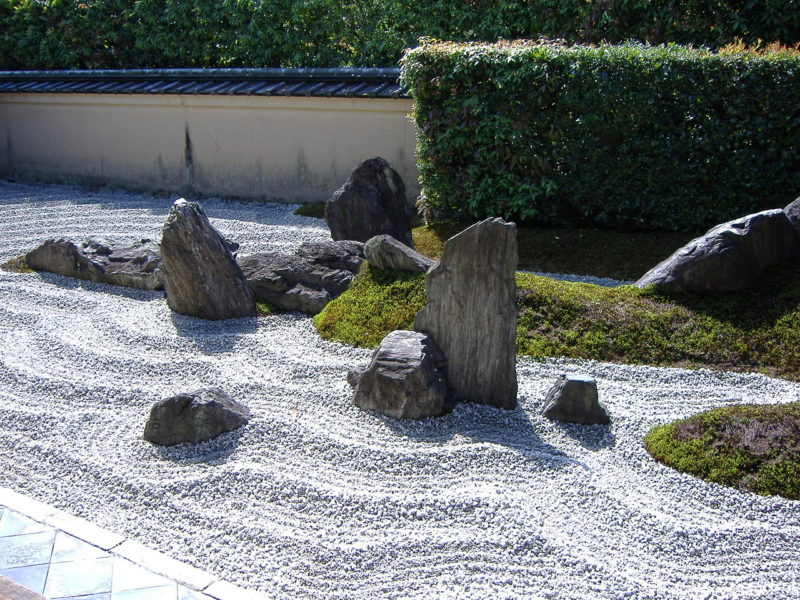
Life is busy, and homeowners want a beautiful yard without constant work. That’s where low-maintenance landscaping ideas shine — using drought-tolerant plants, eco-friendly lawn alternatives, and hardscaping to create an outdoor space that thrives with minimal care.
I’ve teamed up with a landscape expert, and together, we’ll guide you through our low-maintenance landscaping ideas. These are all designed to save you time, money, and effort while keeping your outdoor space looking its best.
- 1. Choose the Right Native, Drought-Tolerant Plants and Succulents
- 2. Plant Perennials
- 3. Choose Lawn Alternatives
- 4. Use Mulch
- 5. Select the Right Trees and Shrubs
- 6. Install Hardscaping Features
- 7. Add Water Features
- 8. Switch to Xeriscaping
- 9. Container Gardening
- 10. Install Efficient Irrigation Systems
- 11. Add Automatic Landscape Lighting
What makes a landscape truly low-maintenance?
A landscape is truly low-maintenance when it’s both beautiful and easy to care for with minimal effort — not no effort.
“Low maintenance doesn’t mean no maintenance, and that is typically the misconception. Low maintenance, in our opinion, relates to slower-growing plants, pruning once a season, etc.,” says Andy Sykes, president of Garrett Churchill, a landscaping company in Willow Grove, Pennsylvania.
“Plants need to be cared for,” Sykes adds — “deadheaded, pruned, beds weeded, etc. The key is minimizing the amount of work, not pretending it doesn’t exist.”
This is the heart of low-maintenance landscaping: setting up your yard in a way that reduces ongoing tasks, but still respects the fact that living landscapes need care. Think of it as designing a system that works with nature, not against it.
Here are the top 11 ways to reduce the landscaping workload around your home:
1. Choose the Right Native, Drought-Tolerant Plants and Succulents
A low-maintenance yard starts with the right plants in the right spots. Native plants, drought-tolerant trees and shrubs, and succulents thrive when matched to their ideal soil, sunlight, and water. The result: stronger growth, fewer pest problems, and far less upkeep.
- Native plants are already adapted to your region’s climate. They don’t need pesticides (which means they’re eco-friendly), and they’re easy on your wallet.
- Drought-tolerant plants save you time and water once they’re established. They’ll keep looking good even if you forget to drag out the hose now and then.
- Succulents (like hens-and-chicks, agave, or echeveria) are the ultimate low-maintenance choice. Their water-storing leaves, variety of shapes and colors, and tolerance for dry conditions make them perfect for rock gardens, succulent gardens, containers, or borders.
Best Plants for Full Sun
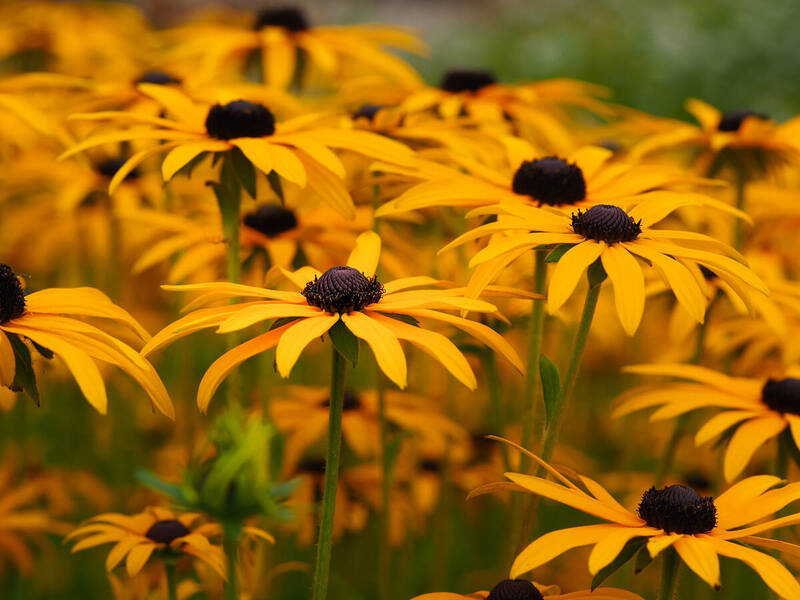
Sunny spots in the yard can be tricky — too much heat and light will wear some plants out. These are a few of my go-to favorites that love the sun and give back with bold color, toughness, and almost no fuss:
- Black-eyed Susans: Bright, hardy perennials that attract pollinators
- Shrub roses: Thriving in full sun, shrub roses come in a variety of colors and produce generous blooms with minimal care.
- Lavender: Fragrant, drought-tolerant, and a natural mosquito repellent
- Blue mist spirea: Produces clouds of soft blue flowers late in the season, all while staying drought-tolerant
My Experience: I’ve created designs using these four sun-loving beauties together in garden beds, and I love how stunning they look when planted — they just seem to come alive.
Best Plants for Shade/Filtered Shade
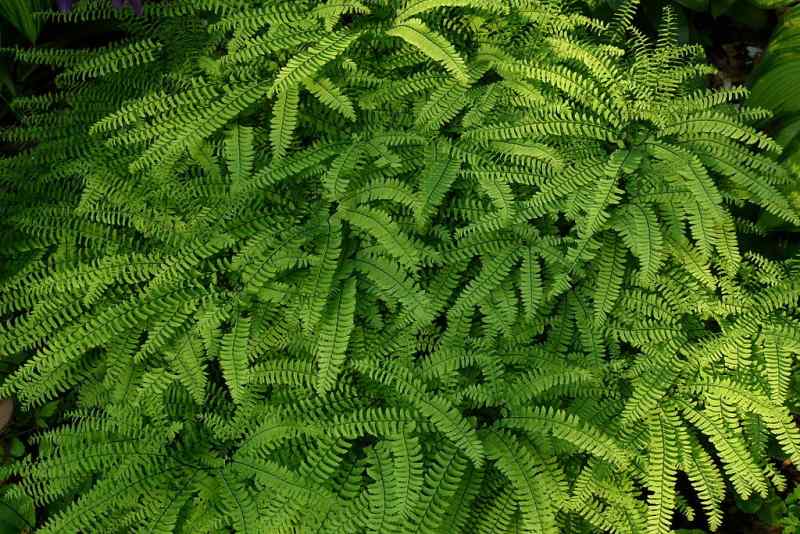
Shady areas often get overlooked, but they can become some of the lushest, most inviting parts of a low-maintenance shade landscape. These plants thrive in low light and require little care:
- Hostas: Nearly indestructible with lush foliage
- Ferns: Low-water needs and perfect for shaded beds
- Astilbe: Feathery plumes that add color and texture
- Oakleaf hydrangeas: Cone-shaped white flowers that shine in part to full shade
Design Tip: In shady areas, I love using variegated hostas (with white or yellow edges). They really pop with contrast. Plant oakleaf hydrangeas just behind them for a layered, textured look. Just a heads-up: Deer adore hostas, but they usually leave oakleaf hydrangeas alone.
Best Plants for Drought

Dry spots don’t have to be barren. Drought-tolerant landscaping uses tough, water-wise plants that thrive with little supplemental watering once established. Some of my favorites are:
- Russian sage: Silver foliage and purple blooms that shrug off dry spells
- Yucca: Striking architectural leaves with low water needs
- Ornamental native grasses: Airy, textural, and naturally drought-tolerant
My Experience: I’ve used Russian sage extensively in landscape designs for homeowners. They fall in love with this tall, light purple-blue perennial, which is drought-tolerant and pairs beautifully with pink shrub roses and ornamental grasses.
2. Plant Perennials

Perennials return year after year, unlike annuals that need replanting each season. Here are some of my go-to low-maintenance perennial plants for texture, color, and fragrance:
- Coreopsis: Daisy-like flowers that bloom all summer
- Coral bells: Stunning foliage in shades from lime green to burgundy
- Salvia: Spikes of purple or blue flowers that attract pollinators
- Catmint: Aromatic and long-blooming, this drought-tolerant perennial is practically carefree
- Hellebores: Lenten roses bring winter gardens to life with evergreen foliage and early blooms in shades of pink, white, and burgundy.
3. Choose Lawn Alternatives
Lawns are often the most high-maintenance part of a yard, with mowing, watering, fertilizing, and weed control as constant chores. Sykes says, “Consider drought-tolerant ground covers, sedges, and no-mow fescue” instead if you’re searching for grass alternatives.
Groundcovers

Groundcovers are low-growing plants that spread to fill bare spots, suppress weeds, and thrive where other plants struggle. These shade-friendly groundcovers are also perennials and easy to maintain, making them ideal for low-maintenance landscaping.
“Depending on the site and cultural conditions, pachysandra is a great ground cover, but it does not like sun. Other shade-loving perennials that act as a ground cover include tiarellas, sedges, ferns, and hostas; for sunny spots, consider ajuga and liriope.”
Thinking of ivy? Think again: “We are not big fans of ivy since it can be invasive, climbing trees and structures, and requiring constant maintenance,” Sykes says.
Note: Wildlife is another consideration — deer can be tricky, and their tastes vary. Here in Pennsylvania, we have to choose deer-resistant plants and trees. Typically, they ignore pachysandra and vinca, but I’ve seen them nibble on liriope, leaving half-chewed stalks behind.
Sedges

These shade-loving perennials thrive in woodland areas, and need very little care once established. In Pennsylvania, our native sedges include Pennsylvania sedge, woodland sedge, Appalachian sedge, and rosy sedge.
No Mow Fescue
In order to create a low-maintenance lawn, consider using a no-mow grass alternative called no-mow fescue. This slow-growing grass blend forms soft clumps that require mowing only once or twice a year. It’s drought-tolerant, weed-resistant, and eco-friendly.
Clover/Microclover
Clover, and its smaller cousin, microclover, used to be written off as weeds, but that’s changing. More homeowners are discovering how clover lawns stay greener than regular grass, enrich the soil with nitrogen, attract pollinators, and mix right in with turf to create a thick, easy lawn that doesn’t need as much fuss.
Wildflowers
Wildflowers are native plants that grow with minimal care, attracting pollinators while needing little watering or mowing. A wildflower garden adds bursts of seasonal color while reducing mowing and watering. In Pennsylvania, natives such as goldenrod and wild blue indigo thrive with little effort.
Ornamental Grasses
Ornamental grasses are easy-care plants valued for their minimal upkeep. Drought-tolerant and pest- and disease-resistant, they provide year-round texture, color, and movement, making them a practical and attractive choice for low-maintenance gardens and landscapes.
I’ve used a wide range of ornamental grasses in landscape designs, from compact blue fescue to sweeping fountain and maiden grasses, as well as bold, striped zebra grass.
Artificial Turf
Love it or hate it, artificial turf offers a low-maintenance lawn alternative — though it’s not entirely maintenance-free. It eliminates the need for mowing and watering but does require occasional cleaning and hosing down.
My Experience: Always hose down artificial turf before guests arrive. My friend didn’t, and when we knelt for a photo, I landed in a puddle of dog pee — soaked pants and smelling like urine for the rest of the night. Quite an unforgettable party memory!
4. Use Mulch
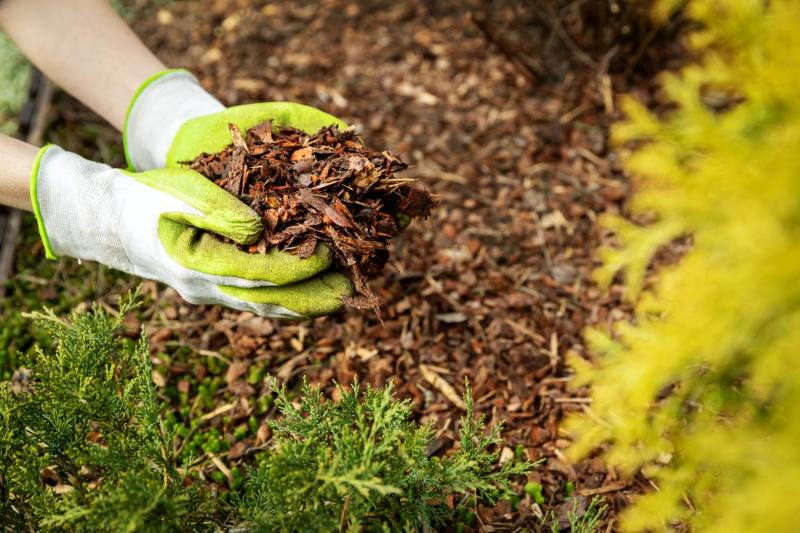
Using organic mulch is a simple way to reduce the maintenance workload in your landscaping beds. Organic mulch nourishes the soil, suppresses weeds, retains soil moisture, and reduces watering requirements.
See Related:
- Mulch Calculator: How Much Mulch Do You Need?
- How to Mulch Your Yard: A Step-by-Step Guide
- Types of Mulch for Your Landscape
5. Select the Right Trees and Shrubs
Fewer, well-chosen trees and shrubs can reduce pruning and create a more manageable yard. Consider:
- Deciduous trees: Upright hornbeam ‘Fastigiata’, serviceberry, or red maple ‘Columnare’.
- Shrubs: Compact inkberry holly, dwarf fothergilla, or ninebark (a drought-tolerant shrub).
Evergreens: ‘Emerald Green’ arborvitae, juniper ‘Skyrocket’, or eastern white pine ‘Columnaris’.
Note: Deer adore ‘Emerald Green’ arborvitae, leaving them looking like popsicle sticks after browsing. For a deer-resistant option, consider the ‘Green Giant’ arborvitae.
6. Install Hardscaping Features
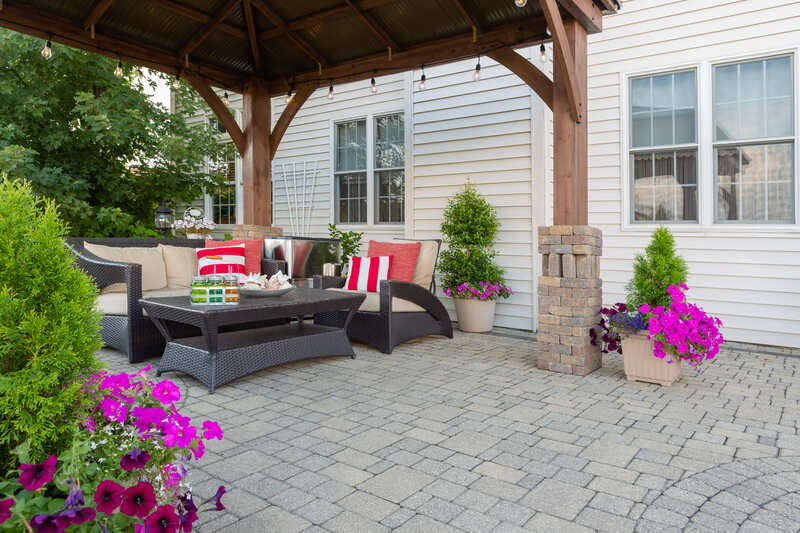
Patios, garden retaining walls, and cozy sitting areas bring both style and structure to your yard. These low-maintenance features create defined spaces, control erosion, and serve as lasting focal points — effortlessly adding charm and functionality to your outdoor space.
Gravel Paths
Gravel paths, like red tipple or pea gravel, guide visitors, adding texture and color. Edged for neatness, they connect areas naturally with low upkeep.
Rock Gardens

A rock garden isn’t just pretty — it’s practical too. It helps control erosion, stabilize slopes, and reduce watering, all while keeping weeds in check. Adding ornamental grasses, low-growing evergreens, and other hardy plants brings texture and color, making rock gardens a smart, low-maintenance choice for any yard.
Patios
Patios extend living space for dining, entertaining, or relaxing. Durable materials like pavers, flagstone, or concrete create beautiful, functional, low-maintenance focal points.
7. Add Water Features
Low-maintenance water features can add beauty and tranquility without demanding constant upkeep. Small fountains, container ponds, or goldfish basins add sound and life to a garden.
Interesting Fact: Goldfish even control mosquito larvae naturally.
8. Switch to Xeriscaping

Xeriscaping relies on native and drought-tolerant plants set with gravel or stone accents, but these water-wise landscapes still require some TLC in their first season.
Sykes cautions, “I understand the concept of xeriscaping, but I feel there is a misconception regarding it. We tell our clients that there is an establishment period for all plants of around 1 growing season. Low-water-use plants need that same establishment period. They may require less water, but that doesn’t mean no water.”
See Related: What is Xeriscaping?
9. Container Gardening
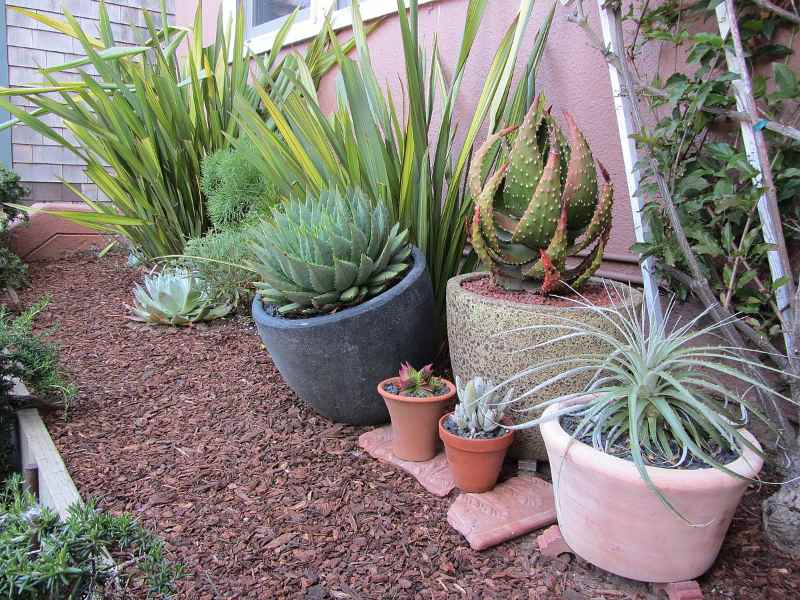
The beauty of container gardening is flexibility. The containers can be moved indoors, and plants can be swapped out for seasonal enjoyment. Smaller spaces and patio areas benefit from this space-saving method by adding herbs, succulents, vegetables, and flowering annuals that thrive with minimal effort.
10. Install Efficient Irrigation Systems
Smart irrigation — sprinkler systems with automatic controllers or drip irrigation — is key to low-maintenance landscaping. These systems deliver the right amount of water to each zone — turf, shrubs, perennials, and annuals — saving time, conserving water, and reducing waste.
See Related: Types of Sprinklers for Your Lawn and Garden
Smart Controllers
Smart controllers automatically adjust based on weather, soil moisture, and plant needs, ensuring turf, shrubs, perennials, and annuals in each zone receive optimal hydration, saving time, water, and effort.
Drip Irrigation
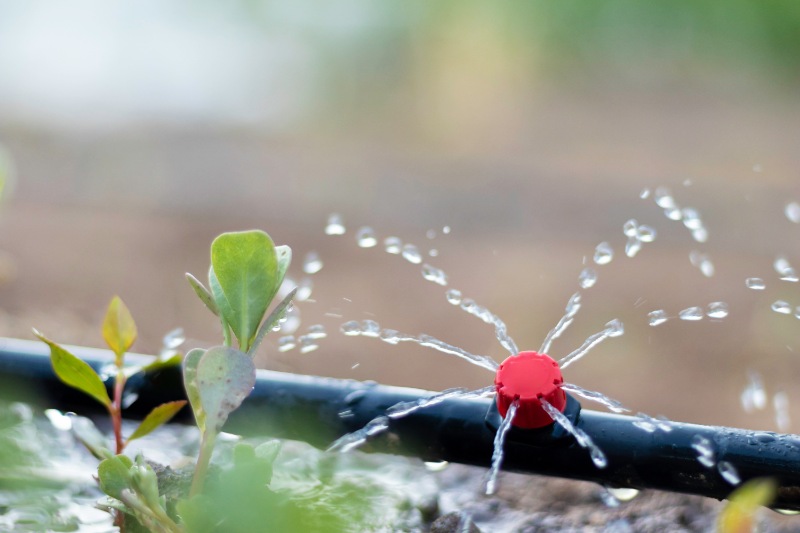
This irrigation system is simple, using a hose with holes that lies on the ground between your plants. Drip irrigation delivers water directly to plant roots, reduces evaporation and runoff, and promotes deep root growth in perennials, annuals, and groundcovers.
11. Add Automatic Landscape Lighting
Add a magical nighttime glow while highlighting pathways, trees, and garden features with automatic landscape lighting. Automatic controls such as timers, motion sensors, and smart controllers make operation effortless, while spotlights and hardscape lighting create ambiance.
Additionally, solar-powered lights are easy to install, require minimal wiring, and charge during the day to turn on automatically at night to save you money on electricity.
Minimal Effort Meets Beautiful When You Hire a Pro
I’ve enjoyed creating low-maintenance yards that reduce homeowners’ work. With minimal effort, combining the right elements, and placing each plant in the perfect spot, it’s pure joy to watch a landscape thrive.
If you’d like to explore the world of low-maintenance landscaping, a local LawnStarter landscaping expert can bring your vision to life. They’ll handle the grunt work so you can sit back, relax, and enjoy the view.
Sources:
- Andy Sykes, president of Garrett Churchill, a landscaping company in Willow Grove, PA. Personal interview.
- “Grasses vs. Sedges.” By Elaine Mills, Extension master gardener. MGNV.
- “The Effect of Fine Fescue Species and Seeding Rate in No-Mow Areas.” By Andrew Hollman, Eric Watkins, and Garett Heineck. University of Minnesota Department of Horticultural Science.
- “Lawns and Microclover.” By Christa Carignan, Maryland certified professional horticulturist and coordinator, University of Maryland Extension Home & Garden Information Center. UMD Extension.
- “Low Maintenance Does Not Mean Maintenance-Free (Artificial Grass).” By Rob Robichaud, sustainable landscape management expert. Verde Valley Turf.
Main Image: Zen garden with large vertical rocks. Image Credit: Hiro2006 / Wikimedia Commons / CC BY-SA 3.0